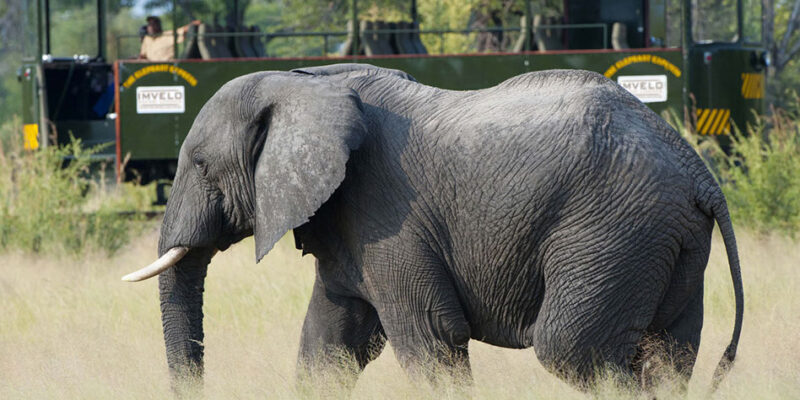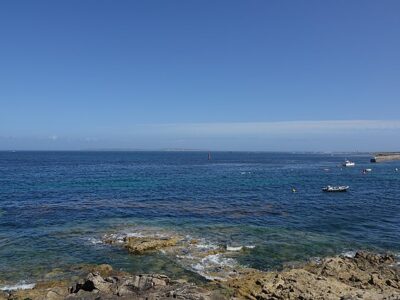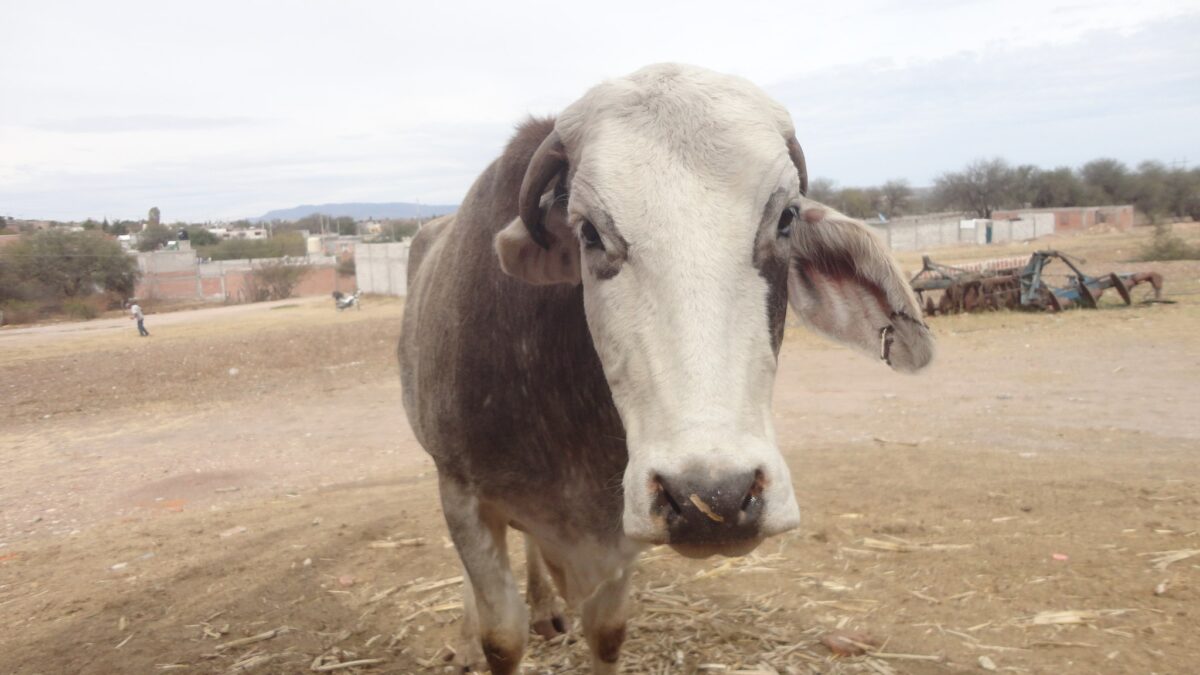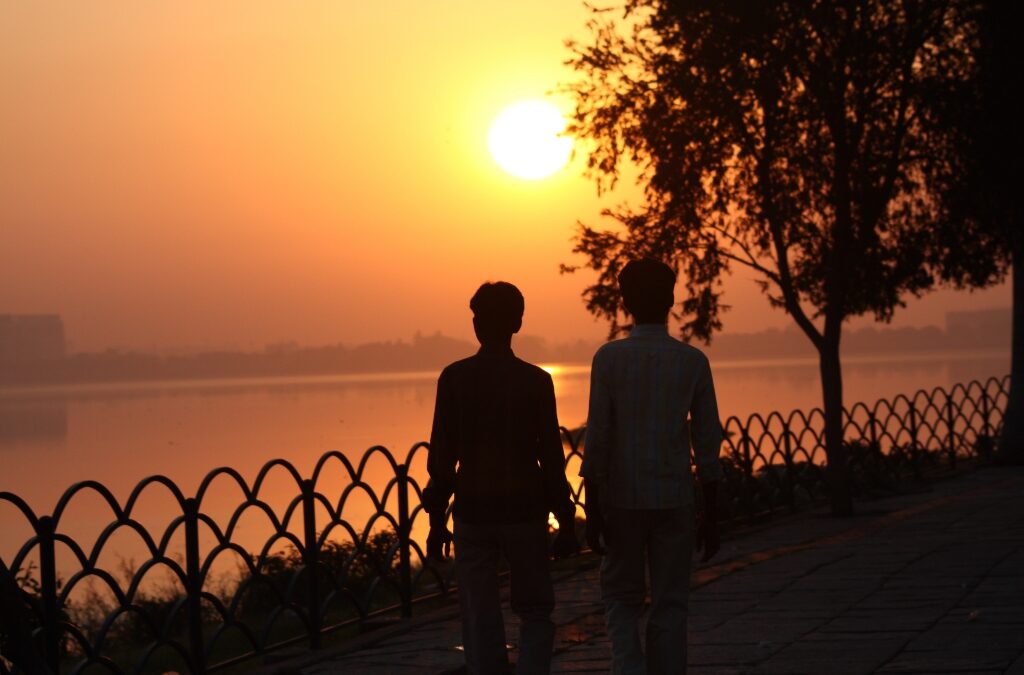
There’s something delightful about riding a train, but in Zimbabwe, you can going on an extraordinary adventure through the heart of the savannah. Welcome to the Elephant Express. In 2014, Imvelo Safari Lodges started an incredible safari experience that takes guests on a train ride into the wilderness.
One travel guide said, “The refurbished railcar can accommodate 22 passengers on individual coach seats, with teak tables in between. An engine and gearbox on the front and back of the railcar mean that it is able to move in both directions of the track. It has plenty of room for luggage and a wide isle allowing guests to view game freely. It also includes a chemical toilet for convenience.
Guests to Imvelo’s Bomani and Camelthorn lodges take a road transfer to Dete Siding near the entrance to Hwange National Park, where they board the Elephant Express and then enjoy a 70km scenic rail transfer aboard the railcar. Game such as elephant, kudu, and wildebeest (to name a few), and various bird species can be spotted along the 2 hour journey either to or from Ngamo siding. Once at Ngamo, a 10 to 15 minute drive in a game vehicle will take you to either Bomani Tented Lodge or Camelthorn Lodge, on the south-east corner of the national park.
The Elephant Express departs from Ngamo Siding at around 11am arriving at Dete Siding at approximately 1pm. It then leaves at around 2pm from Dete arriving back at Ngamo at approximately 4pm in time for afternoon game drive and sundowners. Drinks and snacks will be served during the journeys.
A cold beer or a gin and tonic in the afternoon as you journey through the African bush is quite memorable!”
For those of us not lucky enough to go on a Zimbabwe expedition, the BBC recently brought the Elephant Express to us. Stacey McKenna took its readers on a ride down the Elephant Express recently, sharing a fun story and revealing some amazing pictures. “Riding in a single rail car that only seated 22 people, the train safari offers a different kind of experience than expected. Unlike chasing animals in a jeep or walking and following tracks, the train, the writer said, adds “a sense of serendipity to the wonder” as you come upon the incredible animals by chance.
McKenna continued: We weren’t far out of Dete Station when the engineers slowed and pointed off to the right. Swarming the entrance of the park was a troupe of baboons. There must have been 100 – massive males looking suspiciously over their shoulders, adolescents scampering and body slamming one another, mums with infants Velcro-ed around their necks.
On the rest of the roughly 80km journey, we slowed several times for families of elephants and herds of kudu to cross the tracks. We stopped to spy giraffes grazing in the canopy while zebras and steenbok munched on the underbrush. We saw more lilac-breasted rollers as well as a flock of enormous southern ground-hornbills, spied a brown-hooded (and orange-beaked) kingfisher and heard the cry of a grey go-away bird just in time to spot it.
When Mark “Butch” Butcher – managing director at Imvelo Safari Lodges – first considered launching a tourism train in the 1980s and committed to years of navigating Zimbabwean bureaucracy to make it happen, his vision wasn’t just about the majesty of Hwange’s wildlife. Rather, he aimed to channel the park’s history, and in doing so, highlight the importance of the region’s growing community-based tourism and conservation efforts.
Railroads have been part of the park’s story since its founding. Zimbabwe’s railways were originally built to connect the landlocked county’s mining and agricultural sites with coastal ports in neighbouring Mozambique and South Africa. This particular stretch of tracks was laid in 1904, 24 years before Wankie Game Reserve (Hwange’s predecessor) was established. This led British colonial officials and wildlife experts to question the wisdom of creating a protected area for animals that would be flanked by a functioning train. But the plan went forward and, despite the tracks, Wankie Game Reserve was established in 1928 under the management of game warden Ted Davison.
Hwange National Park is the largest National Park in Zimbabwe and is considered one of Africa’s greatest places to visit. The park has long been renowned for its incredible diversity of wildlife, and today boasts more varieties of mammal and bird species than any other Zimbabwean National Park.
According to Imvelo Lodges, “There are over 100 species of mammals, including 19 large herbivores such as buffalo, eland, sable and wildebeest, and over 400 bird species. However, the area is particularly famous for its population of elephant, some 44,000 strong – based on the latest aerial survey – and combined with the elephants of northern Botswana this is the world’s largest contiguous elephant population and a flagship for the Kavango Zambezi Trans Frontier Conservation Area (KAZA TFCA).
The southern two thirds of the Park are ecologically defined by deep Kalahari sands, which support impressive forests of Zambezi teak and other hardwoods. Scattered within these woodlands are ancient fossil lakebeds and drainage lines, which are now large savannah grasslands fringed with Acacia and Leadwood trees.”
[Read More: Taiwan Transforms Old Subway Station Into Working Farm]










Need these rides in Africa, & India alone
Java, Indonesia,